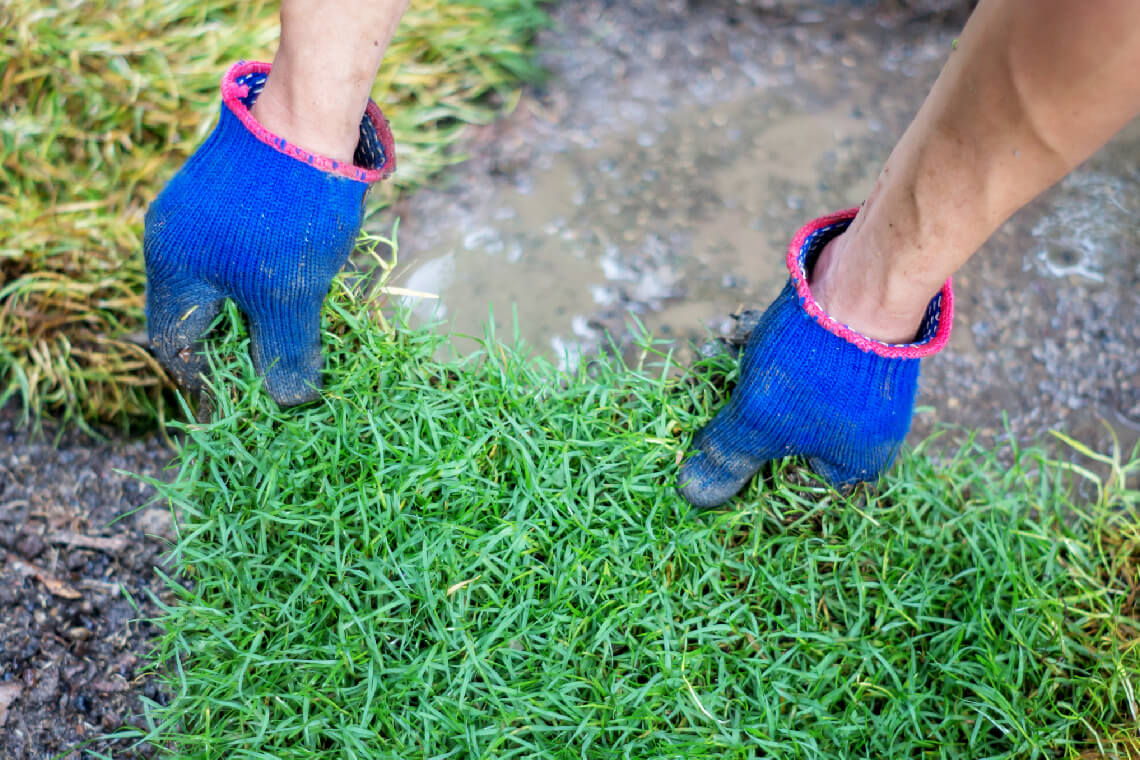Treat Dead Grass Patches In Your Lawn
How To Treat Dead Grass Patches In Your Lawn
Patches of dead grass can be caused by a lot of things including crab grass and disease. These patches can ruin the aesthetics of your garden and will make you want to spend less time outside. Fortunately, you will be able to treat these patches and ensure that you have the lawn you really want.
Clear Out The Dead Grass
The first step that you need to complete when treating these patches is to remove the dead grass. Any other debris and matted turf should also be removed at this point. You can remove this dead grass with a rake, but you make need to cut the roots first.
To cut the roots, you can use a spade and dig into the ground. This will generally make it easier to remove the dead grass and start preparing the area for reseeding.
Loosen The Soil
Once all of the dead grass has been removed, you need to start loosening the soil. This will make it easier for seeds to take root. It is recommended that you loosen around 2 to 3 inches of top soil with a spade before you move on.
If your grass was killed by poor soil conditions, this is when you will need to treat this issue. As you loosen the soil, you will be able to incorporate some compost or other organic matter. Of course, you should test your soil before you do this because you do not want to upset the pH balance.
If your soil is too acidic for grass to grow, you will need to add an alkaline product. The opposite will need to occur if your soil is too alkaline. After adding the compost or organic material to the soil, you will need to retest it to ensure that you have a balanced pH level.
Reseed The Patches
After loosening the soil, you will be able to start reseeding the area. You can buy grass seeds from your local nursery and you should look for ones that are local to your area. Grass species that are local will generally last longer and have a better chance of germinating.
You can also look for seeds that are geared up for the climate in your area. If you live in an area that has hot summers, you need to choose grass that is more drought-resistant. However, if you have very cold winters, you need grass that can survive this.
When you scatter the seeds, you should lightly scratch them into the soil. This will disperse the seeds with some being closer to the top of the soil and others a bit deeper. You should also lightly tap on the soil after scattering the seeds. This will compact the soil so that the seeds have a better chance of taking and not being washed away by water.
Fertilize The Area
After seeding the area, you need to apply a small amount of fertilizer. You should not overdo this as you could smother the seeds and stop them from taking. You also need to be careful with the type of fertilizer that you use.
A lot of garden centers will sell lawn fertilizer and this is the best to get. These fertilizers have been formulated with new grass in mind and will give the seeds the best possible start. Of course, it is important to note that you do not have to fertilize the area if you have good soil.
Water And Mulch
After fertilizing the area, you need to apply a light layer of mulch. You should not use the same mulch as you would for the garden beds because you want the grass to grow through this. A thin layer of straw or some chopped leaves will be best. If you have mulched grass clippings, you can also use this. Mulching the area will help it retain water and will improve germination.
Once the mulch is down, you will need to water the area. Use enough water to wet the top 2 inches of your soil. You should try to water evenly as this will help you avoid any seed washouts. Additionally, you do not want to wash away the mulch you have laid.

